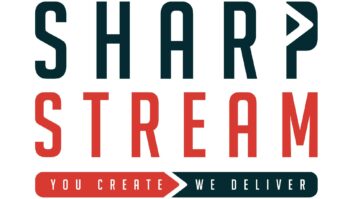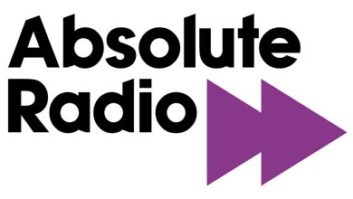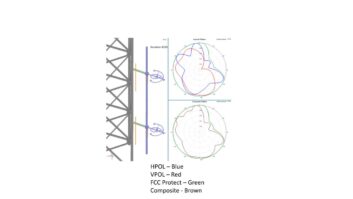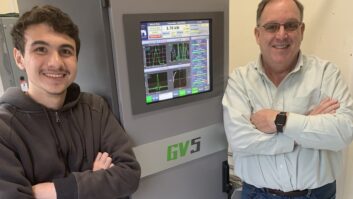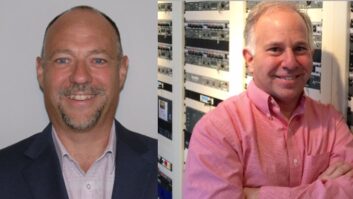A Unique Broadcast Opportunity in 1960 Prompted the Creation of Bauer and the 707
In 1960, a unique broadcast opportunity appeared: an across-the-board daytime power increase for Class IV AM stations to increase power from 250 to 1,000 watts. One byproduct was the creation of a transmitter company to focus on the anticipated demand for a cost-effective 1,000/250-watt transmitter to power hundreds of eligible stations.
That company was named the Bauer Electronics Corp. Its descendant, Bauer Transmitters Inc., continues to operate in El Paso, Texas, as a refurbishing, repair and support facility. Besides remanufacturing classic Bauer transmitters, the firm also designs and builds AM antenna diplexing networks.
Business opportunity
Class IV AM stations prior to 1960 were 250 watts day and night. Today called Class C, these were local stations that served metro and town centers. In rural locations, they served as newspapers of the air, network outlets and community bulletin boards. Theoretically, an increase to 1,000 watts would double daytime coverage, and possibly listeners – an increase not to be ignored. Based on a suggestion from consulting engineer Bob Hammett, a new company was formed using the design talents of Fritz Bauer to “mass produce” a transmitter for this market. Bauer had been making innovative and reliable transmitters literally in his garage since the late 1940s (see sidebar).
The original company principles were Fritz Bauer as president, Ed Edison and Paul Gregg as vice-presidents and Hammett as secretary/treasurer.
Bauer wanted a product with several qualities: simplicity in circuitry with a minimum count of common tubes, ease of maintenance, high value and good performance.
This “ideal” transmitter was introduced at the 1960 NAB convention as the Bauer 707. The tubes up to the final could be bought at a local TV/radio shop; all the power tubes were 4-400s.
Under any definition this unit was a quality product; hundreds are still running. However the most interesting innovation was that the transmitter could be bought in kit form for $3,495.
U-built-it
This was the era of the transmitter watch operator. One thing you had plenty of at the transmitter was time. The 707 went together easily, much as a Heathkit might; on average the job took about two weeks when done carefully. The benefits were the cost – nearly 20 percent less than “factory built” – and that the station staff knew their transmitter inside out. When the project was completed, a Bauer representative came to the station to perform a proof; if it met published specifications, a nameplate was affixed carrying the required information.
Although the first few 707s were made in Fritz Bauer’s garage, by 1962, the company was making a dozen 707s a month in a new plant in San Carlos, Calif. Overall it made 500 or so, nearly two-thirds of which are still running in various services, according to the company.
To answer another opportunity – the burgeoning FM dial – Bauer added FM transmitters, primarily of the then-novel grounded grid design, to its list of broadcast products.
Changing hands
In the latter part of the 1960s, several companies attempted to mimic the full service/supply posture of RCA. Ampex attempted this gambit in the TV arena. On the radio side, Sparta/Cetec bought Bauer from its new owner, Granger Associates, so as to be able to supply transmitters along with its audio gear.
During the Granger and Cetec operation, Paul Gregg served as transmitter product manager and later as a consultant to Cetec when the entire Sparta operation was moved to Carpenteria, Calif., and combined with Schaffer under the name of the Cetec Broadcast Group.
When, in 1980, Cetec decided to exit the broadcast equipment business, Gregg, along with the principles of the Mexican broadcast group, Radiorama, purchased the transmitter line and moved it back to Sacramento, where it became Elcom Bauer. Transmitter manufacturing is a tough market; between severe domestic competition and evolving technology, Bauer essentially became an export firm. The reliability and simplicity of its designs were strong advantages in far-flung places.
Bauer eventually stopped making new transmitters in 1993. The firm now functions mainly as a repair and support company run hands on by Gregg in a modest storefront facility in El Paso.
However, some 300 original Bauer 707s live on in transmitter facilities, most of them abroad but many are in use at U.S. radio stations, and a handful are running strong on the 160 meters amateur band.
Even today, Bauer transmitters and most other Bauer products are supported for parts and service. Looking back at its history, among the firsts listed by the company on its Web site are:
- The first AM transmitter kit
- The first transmitter with solid-state rectifiers
- The first solid-state FM transmitter
- The first all-tetrode 5 kW AM transmitter
- The first to remanufacture its own AM and FM transmitters
The company can be reached via the Web at www.bauertx.com.
Bauer Timeline
1959: Bauer founded in December in Burlingame, Calif.
1967: Company is bought by Granger Associates
1970: Bauer/Granger is bought by Cetec/Sparta
1980: The Bauer transmitter activity is bought by Elcom (Paul Gregg) and Radiorama, a large Mexican broadcaster, from Cetec.
Late 1980s: Nearly the total output of the company is in orders from Radiorama
1992/3: Bauer closes it California plant and moves to El Paso, Texas
Paul Gregg
In an industry populated by exceptional and accomplished people, Paul Gregg is a standout.
An octogenarian, Gregg, now president of Bauer Transmitters, Inc., has spent almost all his adult life in broadcasting, primarily in equipment manufacturing. Still active, he can look back on a career that has spanned 60 years of broadcast.
Graduating from high school in 1941, and with World War II on the horizon, Gregg was in a hurry to get into radio. He attended Northwestern Radio Television Institute in Minneapolis and had his First Class Radio Telephone License and his first radio job, at KWLM in Wilmar, Minn., at age 17. Further stops were KFBB in Great Falls, Mont., and then KLS in Oakland, Calif., before joining the Army Air Corps on Dec. 7, 1942. Most of his Air Corps service was as a radar instructor in Boca Raton, Fla. After the war he returned to KLS (now KWBR) and built KWBR(FM) in San Francisco in 1947.
Gregg also built the first of those infamous three-tower self-supporting AM directional antennas near the end of the Oakland bridge. Low tide allowed him to walk out the ground radials in hip boots.
In the late 1950s, with a young family, he went to work for Gates Radio selling and installing products on the West Coast. The Class IV power increase in 1960 allowed him to become a principle in the start of the Bauer Electronics Corp. Over the years that company went through many changes and owners, which caused Gregg to break out on his own, forming Elcom, a company focusing on audio processing.
Eventually an opportunity to buy back Bauer appeared and he added that product line to the Elcom offerings in 1980. The robust tube design of Bauer transmitters worked well in challenging power and climate locations; many Bauers were shipped to Mexico and countries south. That circumstance lead Bauer to become primarily an exporter. Eventually, to support Mexican and Latin American customers better, the company moved from California to El Paso in 1992.
Paul Gregg, a stalwart of the industry, still pilots his modest company every day from his workbench.
Fritz Bauer
Born in 1905, Bauer got his technical training mainly from service in the Signal Corps in the 1920s.
After World War II when he began modifying old Collins police transmitters that had been working on 160 meters for broadcast use. During the 1950s he started building low-power AM transmitters and sold quite a few in Latin America. He moved to California in the mid-1950s and was building a 1 kW transmitter (the FB-1000J, progenitor of the 707), his first commercial product.
Eventually moving into nearby San Mateo, Bauer continued to build transmitters in his garage. It was in this garage where Bauer and Paul Gregg worked on the prototype 707. Simultaneously Fritz Bauer was busy building the FB-5000J, the first broadcast transmitter to use a high-power tetrode (the 4CX5000A).
A leg up for Bauer was the proximity of the Eimac tube plant and other venders including transformer maker Electro Engineering Works.
The first two Bauer FB-5000J transmitters were sold to Golden West Broadcasters of Gene Autrey fame, and went to KSFO in San Francisco and KVI in Seattle. The chief engineer of Golden West was Loyd Sigmon, known in the Los Angeles area as the developer of the Sigalert.
Although Bauer was president of Bauer Electronics Corp., which built and sold the 707, he continued to maintain his own company, Bauer Electronic Manufacturing Co., which made higher-powered transmitters like the FB-5000J.
Bauer’s own company supplied these transmitters, first to BEC and then to Granger BEC, which handled sales. In 1970, when Cetec-Sparta bought BEC and the 707 line from Granger Associates, Cetec also bought the product and manufacturing facilities of Fritz Bauer’s own company, moving all transmitter manufacturing into Cetec’s plant in Sacramento.
Fritz Bauer died in 1970 of a heart attack at age 65. Paul Gregg’s analysis is that, “There was a craftsmanship in Fritz Bauer transmitters not found in any others. It was not unusual to have a factory engineer from Gates or RCA or Collins, on a busman’s holiday at a NAB convention, stop by and marvel at the simplicity of a Fritz Bauer-built transmitter. The beautiful wiring harness and the unique way power components were mounted set his product apart from all the others, even including those of the Bauer Electronic Corp.
“The corporation could copy his ideas but never his talent.”






